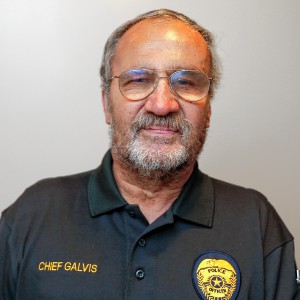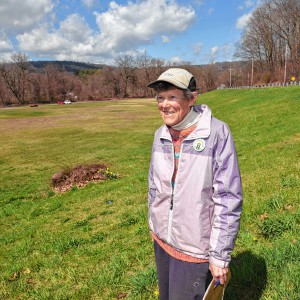A NOURISHED SOUL
| Published: 01-31-2023 3:51 PM |
We have entered that gloomy time of year. Although the days are beginning to get longer and lighter, the landscape is snowy and icy. I find that nothing cheers me up in weather like this than the smell (and the taste) of bread fresh from the oven.
One of my favorite bread recipes came to me from the late Elaine Anderson Ostergren of Charlemont. Elaine died in 2013 at the age of 92. She had spent time in Charlemont all her life. Although I met her late in that life, she had a profound effect on me.
Elaine’s immigrant grandfather came across land in Charlemont almost 100 years ago and fell in love with it. He said the woodsy hillside reminded him of his home in Sweden.
Elaine’s father built a house on that hillside and named it Pine Hill. She and her family spent vacations there throughout her life. She and her husband Cliff moved to Pine Hill full time after retiring in 1977.
Elaine was a musician and teacher as well as the mother of two and the foster mother of many other children. I met her when I came home from graduate school and was recruited to sing in the choir at the Charlemont Federated Church, where Elaine taught Sunday school and directed the choir.
She was highly organized and quietly firm. The kids, who called her “Mrs. O.,” obeyed her every command but still had a wonderful time studying and singing with her. The choir was disciplined and serious. It took a reminder from Elaine’s husband Cliff, a bass, to make us smile every Sunday as we got ready to sing.
As I got to know Elaine, I learned more about her. When I was preparing to perform in a re-creation of a World War II USO show, she told me about her service in the Navy. She had used her sharp intelligence as a code breaker in the war. Elaine generously lent me her officer’s cap to wear for my performance in the USO show. A couple of years ago, when I asked about borrowing it again for a performance of more songs from the 1940s, Elaine and Cliff’s daughter Sharon was unable to find it.
Sharon did manage to find the cap Elaine wore when she first joined the W.A.V.E.S., and I wore it proudly. I had fun remembering and talking about Elaine during that concert.
Article continues after...
Yesterday's Most Read Articles
 Greenfield man arrested in New York on murder charge
Greenfield man arrested in New York on murder charge
 Man allegedly steals $100K worth of items from Northampton, South Deerfield businesses
Man allegedly steals $100K worth of items from Northampton, South Deerfield businesses
 Greenfield Police Logs: April 9 to April 17, 2024
Greenfield Police Logs: April 9 to April 17, 2024
 Former Leyden police chief Daniel Galvis charged with larceny
Former Leyden police chief Daniel Galvis charged with larceny
 Shea Theater mural artist chosen out of 354 applicants
Shea Theater mural artist chosen out of 354 applicants
 Millers Meadow idea would ‘completely transform’ Colrain Street lot in Greenfield
Millers Meadow idea would ‘completely transform’ Colrain Street lot in Greenfield
Another facet of Elaine that surprised me was manifested when she retired from leading the church choir in the late 1990s. She had suffered a few health scares at that point but seemed quite fit. I asked her why she had to retire.
She explained that leading the choir was highly stressful for her, and she wanted to protect her heart. In my enthusiasm in singing with her, I had never noticed the tension she apparently experienced. I felt sad for her, and for the choir.
I also felt a little guilty … because Elaine herself had been partly responsible for my own relaxation about music. For years, I suffered from stage fright any time I sang in public.
I began to recover from this fright a few years before I started singing with Elaine. As I matured, I finally realized that no one was going to scream at me if I produced a wrong note or a made-up lyric.
Elaine helped cement my newfound musical confidence by welcoming me into the choir … and by assigning me solos. She knew that the excellent acoustics in the Federated Church would help me get over my lingering shyness. The first time I opened my mouth to sing a solo there, I was astounded. The church’s sanctuary made my fairly ordinary voice resonate. After that, I never shied away from singing. I now perform frequently and with great joy.
I hope Elaine knew how much she helped me as a singer and a person. She also helped me as a cook, by sharing the recipe below for my “Pudding Hollow Cookbook.”
I recently learned that this slightly sweet bread formula came not from Elaine but from her husband Cliff. Her children called it “Grandma Ostergren’s Oatmeal Bread.”
This makes sense. I know that Cliff was a major culinary force in the Ostergren home. He got up every morning to fix breakfast for Elaine, and oatmeal was one of his specialties.
According to daughter Sharon Ostergren Pierce, the secret to Cliff’s creamy oatmeal was cooking it in a double boiler, a technique I hope to try before winter folds up its tent.
Sharon says that favorite oatmeal toppings in her family included milk and sugar, maple syrup, brown sugar and butter, raisins, or fresh fruit.
Even knowing that the oatmeal at Pine Hill was made by Cliff, I still associate it with Elaine, so I’m sticking with the name she gave it, Swedish Oatmeal Bread.
Both she and Cliff were of Swedish descent.
I have changed the recipe slightly. The Ostergrens sweetened their bread with molasses, but I prefer the more delicate flavor of maple syrup. The anise seed is in the original recipe. It’s a typical Swedish flavor that gives the bread a hint of licorice. I pair this bread with smoked salmon or with salted European butter.
The recipe makes a lot of bread. I usually freeze at least one of the loaves, and often two.
Ingredients:
2 cups raw oatmeal (use “old fashioned” oats, not instant)
boiling water just to cover the oats
3/4 cup maple syrup
2 tablespoons sugar plus 1 teaspoon later
2 teaspoons salt
1 tablespoon shortening or soft butter
2 teaspoons anise seed
1 egg, beaten
6 to 6-1/2 cups flour
1 package yeast
Instructions:
Cover the oatmeal (barely) with the boiling water. Add the maple syrup, 2 tablespoons of the sugar, the salt, the shortening or butter, the anise seed, and the egg. Add 2 cups of the flour and mix well.
Soften the yeast in 1/2 cup warm water in which you have dissolved the remaining sugar, and add it to the other ingredients. Add enough of the remaining flour to make a dough that begins to hold together. Knead for 5 to 10 minutes, until elastic.
Place the dough in a greased bowl, and let it rise, covered with a damp towel, in a warm spot for 4 hours (less if using rapid-rise yeast). Punch down the dough, and shape it into 3 loaves. Place them in greased and floured loaf pans, and let them rise for another hour. Bake at 325 for 1 hour.
Makes three loaves.
Tinky Weisblat is an award-winning author and singer. Her latest book is “Pot Luck: Random Acts of Cooking.” Visit her website, TinkyCooks.com.
]]>

 Speaking of Nature: Indulging in eye candy: Finally, after such a long wait, it’s beginning to look like spring is here
Speaking of Nature: Indulging in eye candy: Finally, after such a long wait, it’s beginning to look like spring is here Celebrating ‘Seasonings’: New book by veteran preacher and poet, Allen ‘Mick’ Comstock
Celebrating ‘Seasonings’: New book by veteran preacher and poet, Allen ‘Mick’ Comstock Faith Matters: How to still the muddy waters of overthinking: Clarity, peace and God can be found in the quiet spaces
Faith Matters: How to still the muddy waters of overthinking: Clarity, peace and God can be found in the quiet spaces A time for every purpose under heaven: Free sing-a-long Pete Seeger Fest returns to Ashfield, April 6
A time for every purpose under heaven: Free sing-a-long Pete Seeger Fest returns to Ashfield, April 6
